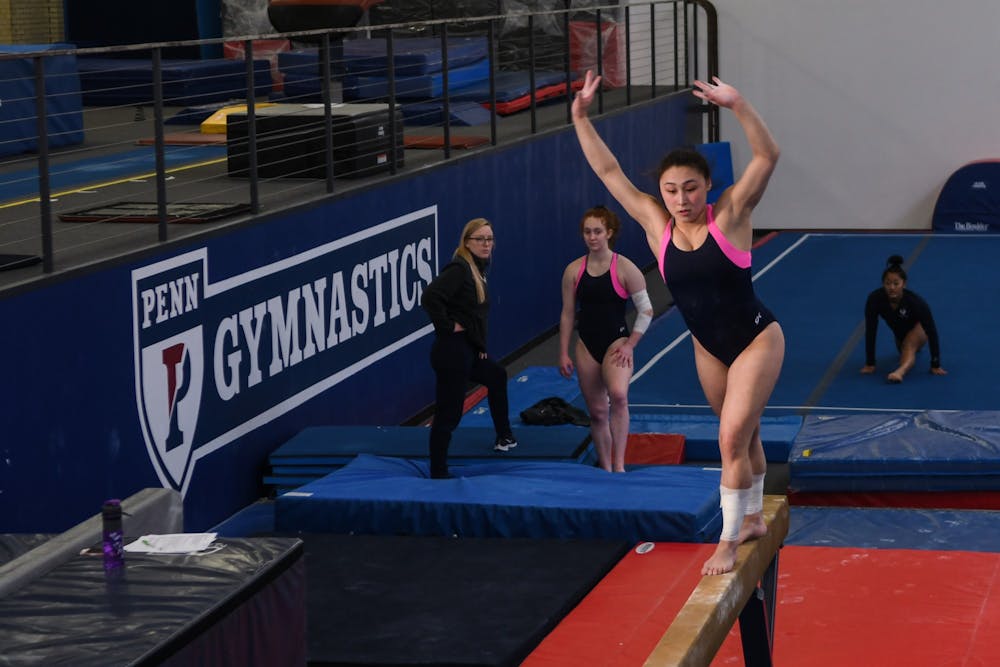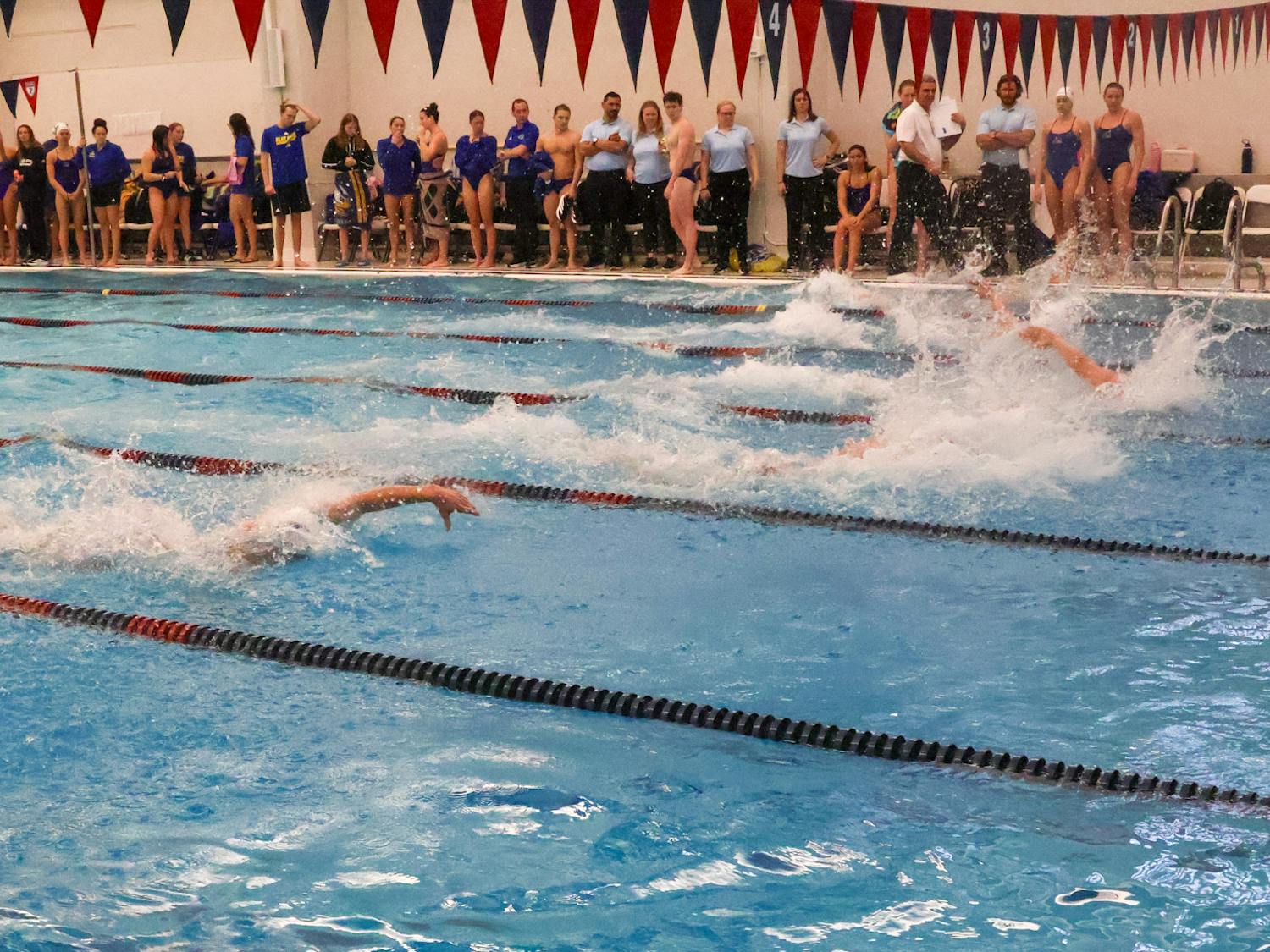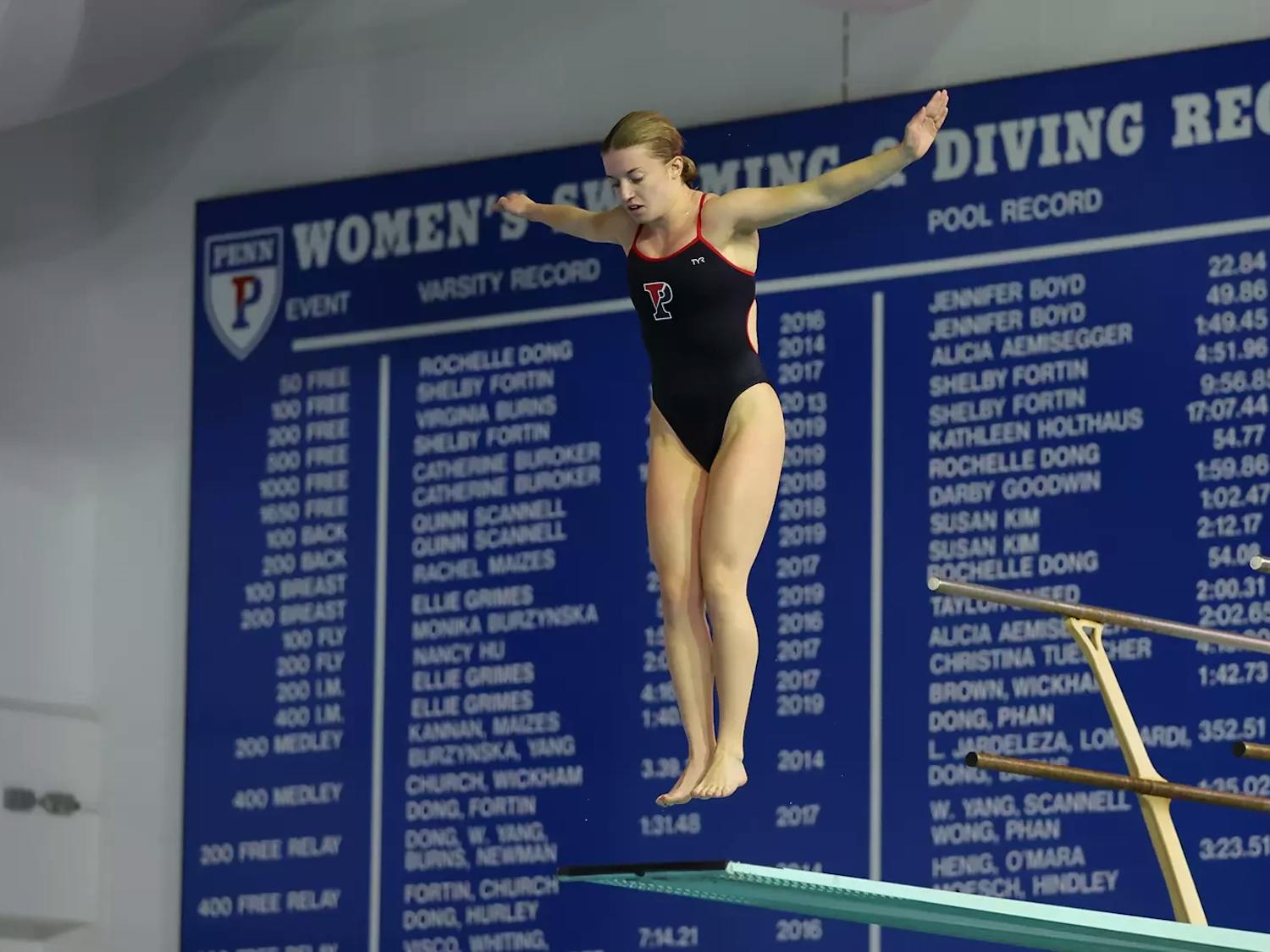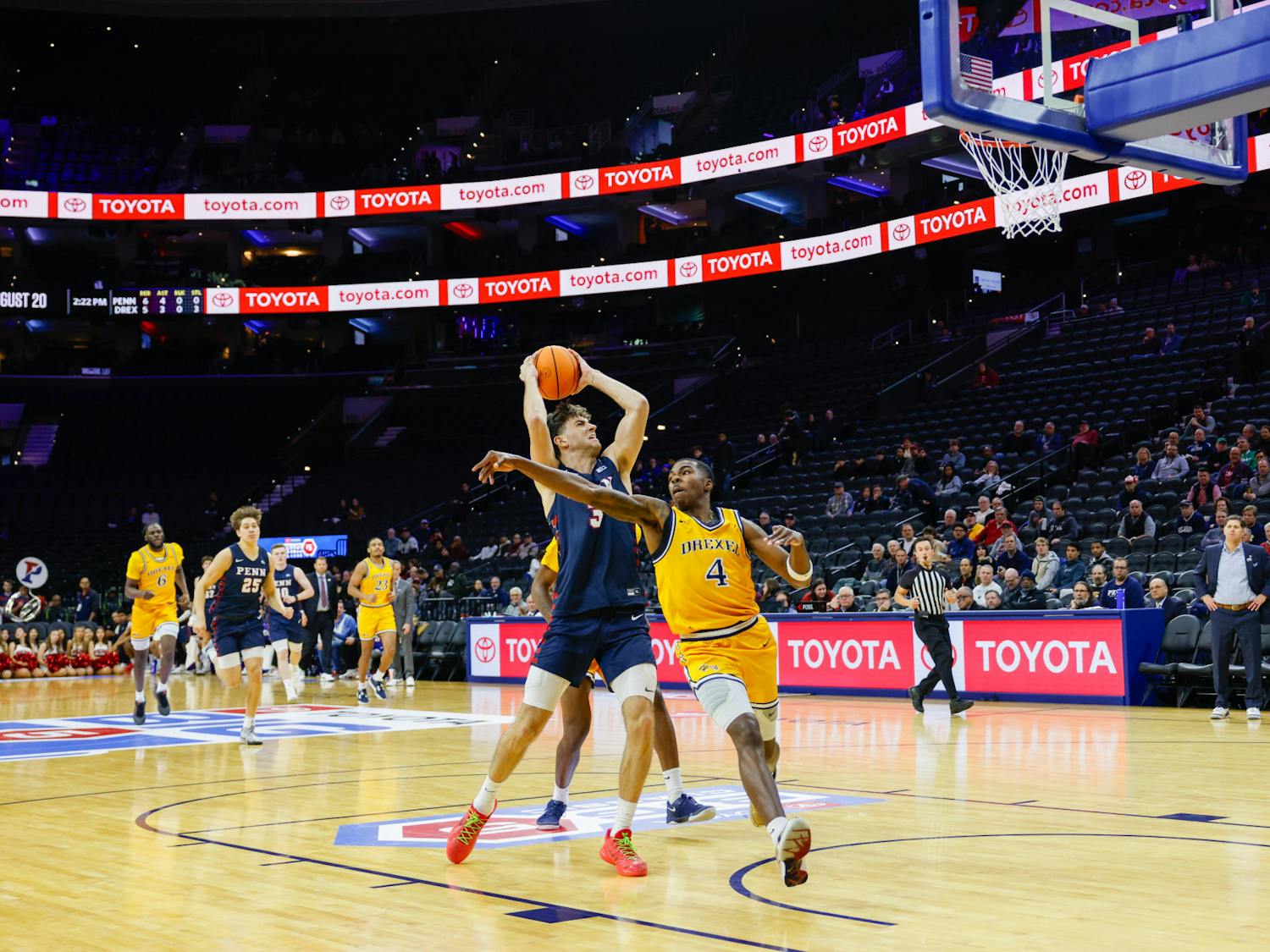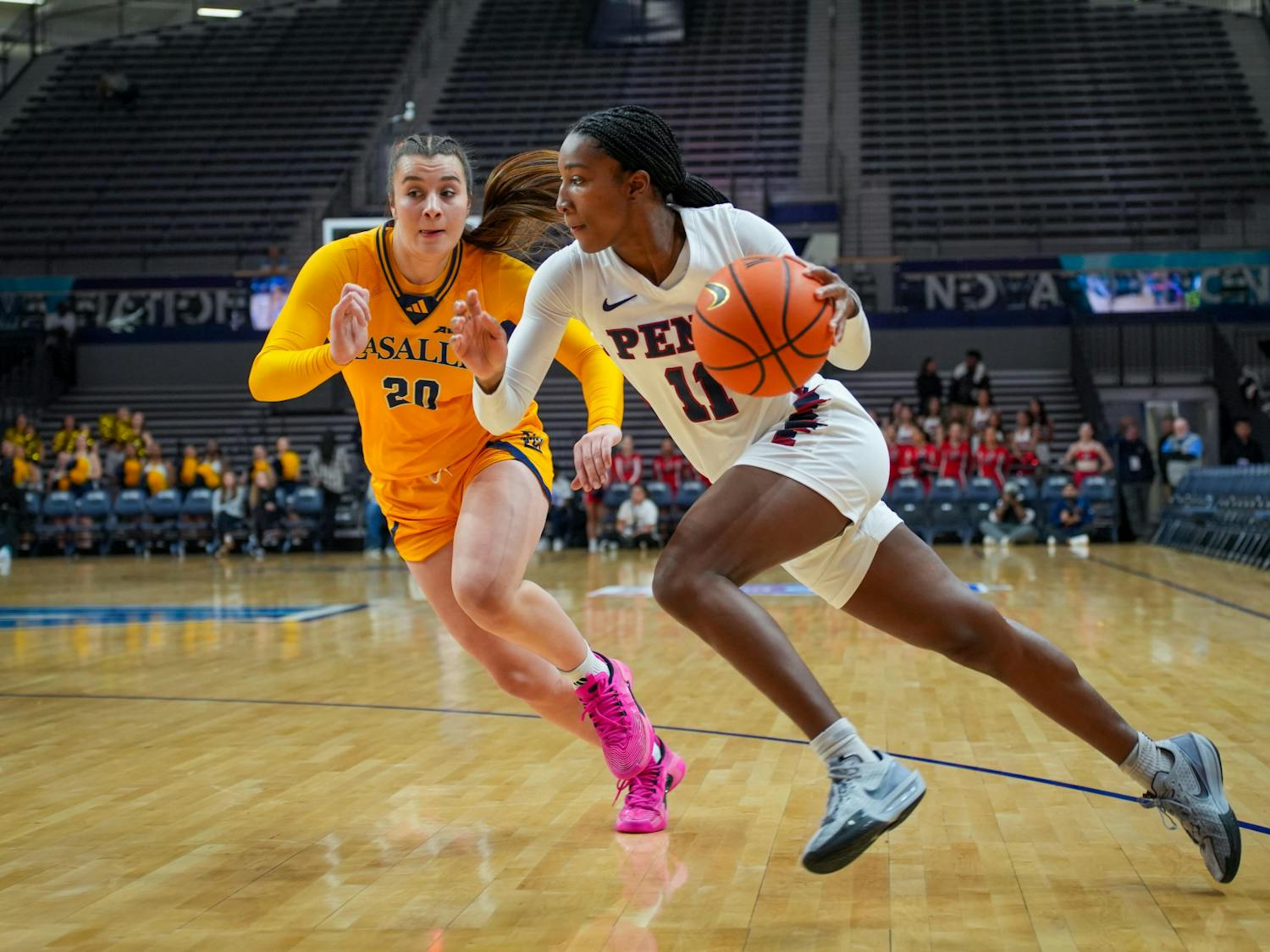Gymnastics routines seem to go viral every year, leaving people blown away by the acrobatics and jaw-dropping skills pulled off by gymnasts at all levels of competition. Despite being amazed by the routines on display, casual viewers may be a little confused by the sport. Here is a breakdown of gymnastics' different events, and who to watch on the Quakers in each for the 2020 season.
The sport consists of four events: vault, beam, bars, and floor. During collegiate competitions, each school sends six athletes out to compete in each of the four events, with each athlete doing two routines. Scores for each athlete are averaged between the two routines, and the top five scores are accumulated into a team score.
While each gymnast has her own specialty, many participate in multiple events. Only one athlete, deemed the all-rounder, participates in all four events during the meet.
Vault is one of the more high stakes events in gymnastics because it does not consist of a lengthy routine. Gymnasts run up from a distance of 25 meters onto a springboard before propelling themselves off of the vault. They try to complete as many flips, twists, or somersaults in the air as they can before landing on their feet within the legal area.
The event, being so quick in nature, requires a lot of speed and power, and gymnasts have to be able to perfect everything from their landing angle to stride pattern. Sophomores Ava Caravela and Sydney Kraez are the Quakers’ best at vault and will look to build on their success from last season in this year’s meets.
While all of the events in gymnastics are daunting, beam has a reputation of being especially nerve-racking. The beam is five meters long and only 10 centimeters (four inches) wide, while also being over four feet above the ground. Routines on the beam include leaps, flips, splits, poses, handstands, and walkovers.
The event ends with the gymnast dismounting from the beam using a combination of skills while trying to land straight. Athletes participating in beam must be able to do their routine with incredible precision, as even one misstep could end their routine prematurely.
Although she has been competing through injury, sophomore Natalie Yang has been among the team’s top scorers in beam so far this year, and she understands its particular importance during a meet.
RELATED:
Sophomore Sydney Kraez is Penn gymnastics' newest all-around powerhouse
Seeking first dual meet win, Penn gymnastics hosts Rutgers this weekend
“I think there is a lot of potential to score really high in that event, and being consistent and showing off your skills is really important for the team,” Yang said.
Bars involves the placement of two bars, one 250 centimeters high and the other 170 centimeters high. Routines for this event last around 40 seconds and consist of hanging, twisting, or flipping either on one bar or between the two bars. The entire routine must be fluid, so there should be no pauses or extra swings. Judges look for difficult transitions between the bars and a clean and acrobatic dismount.
Juniors Jordyn Mannino and Rose Hoffman have led a very tight-knit group for Penn bars over the past three years, and are they hoping to capitalize off of each other to have a successful season this year.
“The group that does bars gets very close, and we depend on each other a lot,” Mannino said, “Personally, I think it’s a mentally demanding event, so you know that you can lean on each other and really motivate each other, and it really shows in practice and meets.”
“Even though [bars is] not the same kind of performance as [floor exercise], there’s still a performance aspect like hitting all of your handstands and sticking the landing,” Hoffman said. “There’s no better feeling than when you stick the dismount and it’s contributing to the team in a positive way.”
The floor exercise is largely seen as the most artistic and expressive event in gymnastics. Gymnasts spend up to 90 seconds on the 144 square meter mat, using no apparatus or props during the course of their routine. Floor routines consist of acrobatic stunts such as cartwheels or flips, but also include aspects of dance as well. The floor exercise is one of the more consistently high scoring events for the Quakers, led by junior Darcy Matsuda.
“Something that I really love [about floor] is getting to show off a little bit. It is more of a performance than something like vault, so that’s fun,” Matsuda said, “You can even interact with teammates a little bit during it, so I think that’s really, really fun and something I really love.”
The Quakers will host Rutgers on Sunday at the Palestra, and they will try to use their camaraderie and depth in all four events to lead to their first win of the season.


